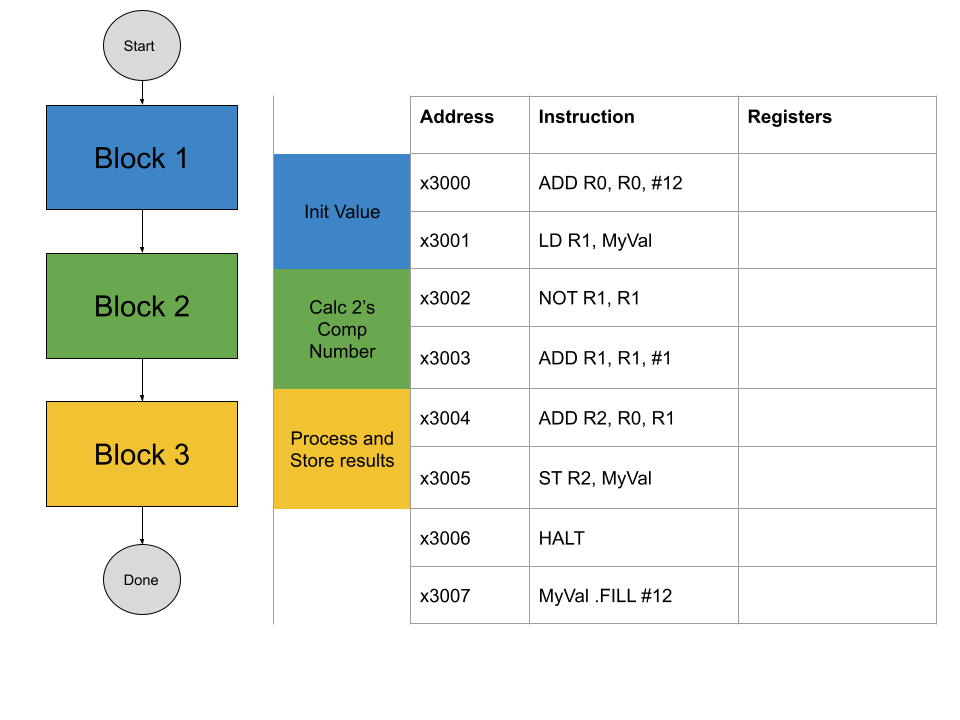Sequential Program Flow
Executing instructions in-order
Key Concepts |
|
Terms
| Term | Meaning |
|---|---|
| Code Block | Set of instructions together in a section of a program. Code blocks are instructions that together accomplish a function of the program. |
| Condition | Boolean value set by data or user input. Can be multiple values that are all logically compared into a single True/False result. |
| Instruction | Single executable line of code in a program. Includes OpCodes and Operands. |
Introduction
A sequential group of instructions (code block) is executing each instruction in order from first to last. Each time the program runs, the code block executes in the same order and with the same results.
Sequential Flow
Without any influence from user or data, a program will execute each instruction in order.
While the program is performing operations on data from user input and/or data stored in memory, it is not jumping around in the code based on the data
Simple sequential program in Java and LC-3 Assembly
java
int result = 0;
int x = 15;
x += 15;
result = x * 2;LC-3
.ORIG x3000
LD R2, X
ADD R2, R2, #15
ADD R3, R2, R2
ST R3, Result
HALT
.END
Result .FILL #0
X .FILL #15These two code examples run top to bottom with no change in flow

Conclusion
Sequential flow is the default. This occurs with there are no decisions being made in the code.
